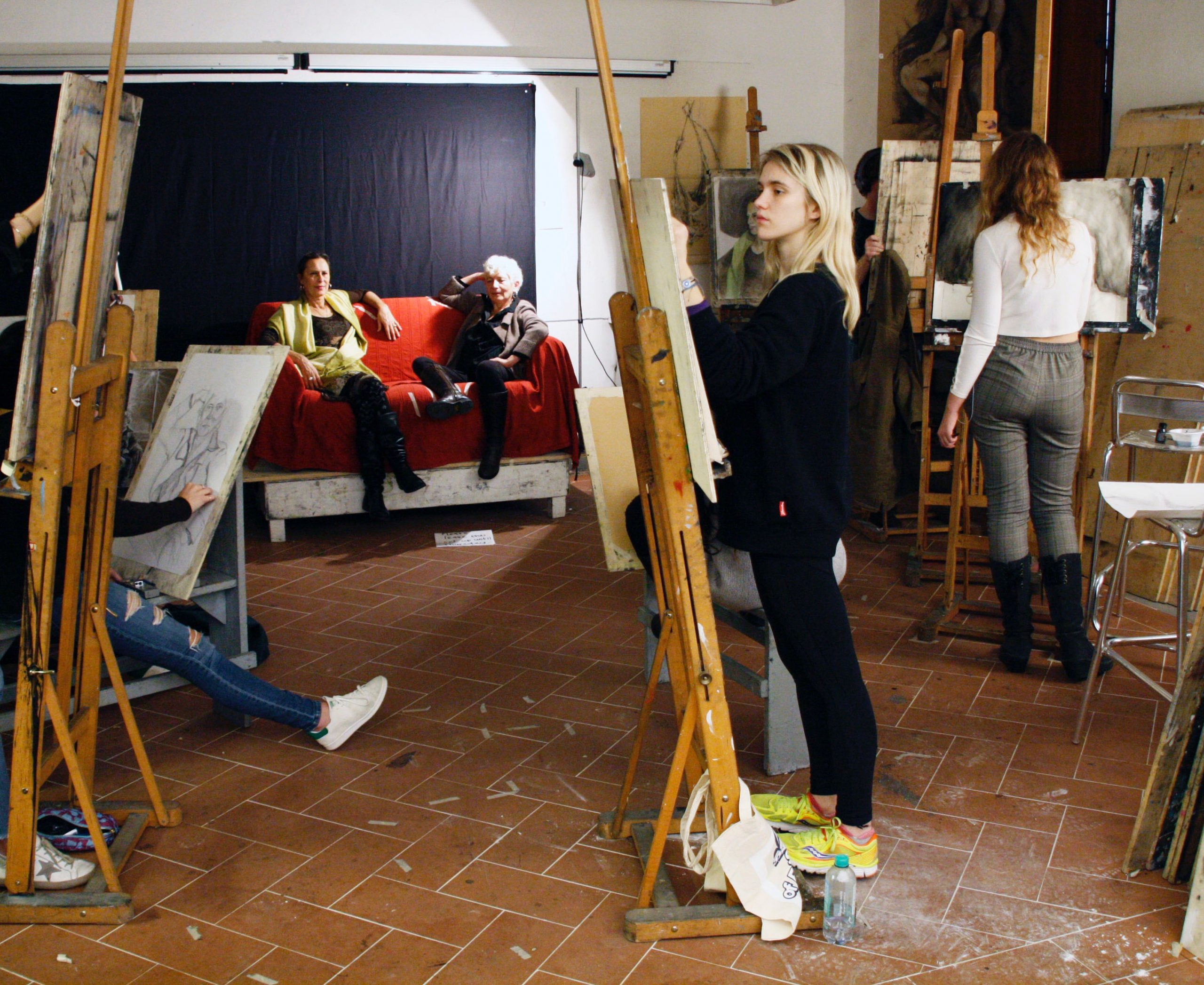Senior Willa King writes about her internship last summer conducting art therapy with patients at Mount Sinai Hospital in New York City.

There aren’t many opportunities for undergraduate psychology students to practice therapy, so when it came time to line up an internship for last summer, I had to get, well, creative.
I found what I was looking for in the Art for Healing program at Mount Sinai Hospital in New York City, where my role would be to help patients find relief from the stress of disease and hospitalization through art and conversation.
I envisioned myself surrounded by eager patients, enthusiastically explaining the healing power of art-making while they expressed their emotions with each stroke of the brush.
Reality struck fast. Just navigating the eight-block-long hospital was a challenge. Each day I set off down the halls with my rickety art cart whose wheels fell off regularly. I awkwardly finessed it onto an elevator with people pushing wheelchairs and gurneys, all the while trying to act like my job was as important.
When I reached the unit, I was supposed to check with the nursing staff to find patients who might benefit from creating art. But when I grabbed one of the busy nurses and asked, “Do you have a minute?”— often the response was, “No, I don’t.”
To add to my inferiority complex, the “art therapy” volunteers were informed we couldn’t actually offer the patients art therapy because we don’t have licenses. So when I showed up with my cart stacked with coloring books and crayons and asked patients about doing an art project, I got comments like, “I’m not five.” One guy said, “My little sister’s an artist…. I’m more of a Marine guy.”
Being a squeamish psychology student rather than a pre-med major like many of the volunteers contributed to my discomfort. Another complication was my allergy to hand sanitizer, which had to be applied on the way in and out of every room. I kept quiet, figuring I’d tough the puffy red hands for the cause of patient safety.
The truth is Mount Sinai strives to make its thousand-plus volunteers feel welcomed and comfortable. Its devotion to providing volunteer services such as Music for Healing and Pet-Assisted Therapy makes it a truly special hospital. But on site, when doctors and nurses are running around saving lives, it’s hard for them to treat the undergrad with the art cart with the respect she thinks she deserves.
Still, for every couple of nurses who rolled their eyes when I interrupted their work, there was another who thanked me profusely for dedicating time to the patients.
And for every handful of patients who rejected my offer to lead them in an art activity, there was one who made all my efforts feel worthwhile. On my first day, as I taught two patients how to make paper flowers, they bonded as they discussed their diagnoses and how down they feel in the hospital. “But, this really made my day,” one of them said.
Another patient chose a coloring page of a cabin because it looked like one where he’d stayed in Iceland, which sparked a conversation about his journeys throughout Europe. We discussed where he’d travel once he was well, and he asked me to hang his finished picture on the wall as a symbol of hope.
I helped one patient with a disability draw pictures for his children. He was excited to have gifts for them because he had felt like an absentee parent since being hospitalized. Another patient declined to participate because his hands hurt, so I offered to write a letter for him. I wrote one to his daughter and drew flowers on the envelope. He liked it so much he asked for another. I wrote a letter to his wife and decorated it with bluebirds. It put a big smile on his face, and he said, “One more!” He asked for a letter to his son, who was sitting there with him. As I was preparing to leave, he said, “Please … one more.” I made a final letter for his granddaughter.
My struggles at Mount Sinai were humbling. I flourished once I understood my small place in a large system dedicated to healing patients in a variety of ways. I learned how important it is for patients to interact with new people and, even just for an hour, to get deeply involved in an activity seemingly unrelated to their health, one that brings a sense of focus and connection and has the ability to transport the mind. I realized I could make my most meaningful contribution by finding the patients who were open to the method of healing I had to offer, and from there, discovering the unique ways in which creativity could uplift them.
In my classes at UNC-Chapel Hill, we categorize patients — anxious, depressed, OCD — and discuss corresponding solutions — cognitive therapy, psychotherapy, exposure therapy. At Mount Sinai, I learned to individualize patients and saw how treating them is an adaptable process. Diagnoses and prescribed therapies provide the backbone of the recovery process — fleshing out personalized treatments is the art of the therapist.
Essay by Willa King, a senior psychology major in the College of Arts & Sciences from Richmond, Virginia, and a Karen Gil Intern. She is also pursuing a minor in studio art. She spent last summer conducting art therapy with patients at Mount Sinai Hospital in New York City.
